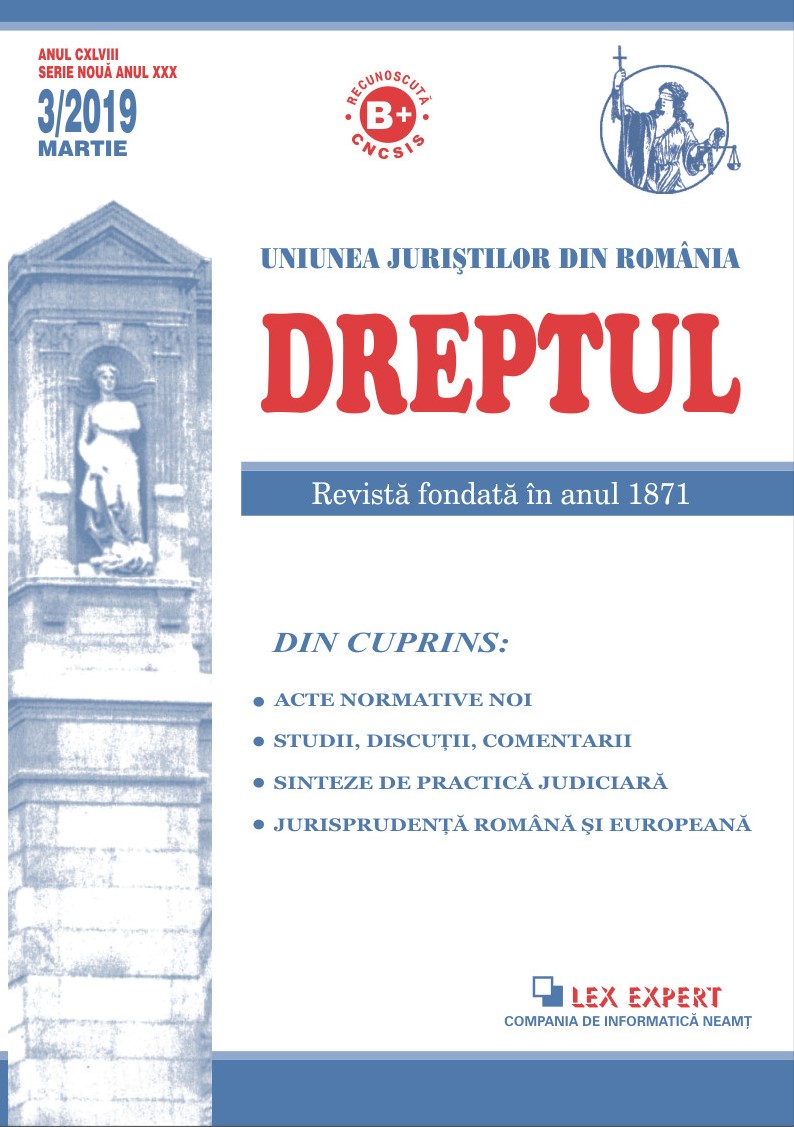Aspecte particulare privind citarea şi comunicarea în procedura insolvenţei
Particular aspects on the summoning and communication in the insolvency procedure
Author(s): Gabriel NăsuiSubject(s): Law, Constitution, Jurisprudence, Civil Law
Published by: Uniunea Juriștilor din România
Keywords: summoning; communication; publishing; BPI; insolvency;
Summary/Abstract: Termination of payments or insolvency is the patrimonial state of an entrepreneur that isoutlined by the impossibility of creditors to pay. In this case, a collective procedure is in place tocover the insolvency debtor’s liability, a procedure governed by the provisions of Law No 85/2014 oninsolvency and insolvency prevention procedures. This procedure, although it is a collective one,retains its contradictory character, litigious issues being usually settled with parties summoning. Thefundamental principles of the civil process governed by the Civil Procedure Code also apply toinsolvency. The Civil Procedure Code is the common law of insolvency where the Insolvency Lawdoes not contain special rules.The way in which the participants in the procedure are summoned or notified, as well as themanner in which the communications of procedural documents and information in the insolvencyproceedings are made, are simplified and dematerialized. Notifications and communications aremade through the Insolvency Procedures Bulletin (BPI), an electronic publication managed by theTrade Registry. Anyone can get information on a business partner’s insolvency procedure through asimple search in this database.This method of summoning and communicating procedural documents was introduced bythe old insolvency law (Law No 85/2006) but was criticized and subject to the control of theConstitutional Court on the ground that it would violate the right of free access to justice forpersons against whom proceedings for insolvency proceedings would be initiated after theopening of the proceedings. The Constitutional Court ruled in 2007 that the provisions of formerArticle 7 of the Law No 85/2006 (now repealed), which provided notifications, citations andcommunications through BPI to persons wholly foreign to the proceedings and who had notpreviously been cited under the procedural requirements of free access to justice, is contrary tothe Constitution. For this reason, Insolvency Law No 85/2014, currently in force, stated, at Article 42 (4), that the first citation or communication of the procedural documents made to such personsis carried out in accordance with the provisions of the Civil Procedure Code, the rest of thecitations and communications being made through BPI, as well as for the other participants in theprocedure.In the insolvency procedure, is regulated, along with the summoning of the parties, according tothe Civil Procedure Code, also a specific summoning of the professionals via an electronicpublication called the Bulletin of the Insolvency Procedures (BPI). This specific summons is the ruleapplied during the procedure course both before the syndic judge, and in the appeal means. As anexception from the summoning rule, respectively the communication via the publishing in the BPI, thecommunication of the procedure documents before the opening of the procedure and the notice ofthe opening of the procedure shall be achieved according to the provisions of the Civil ProcedureCode. Also, the first summoning and communication of the procedure documents by the personsagainst whom a judicial action is filed, on the grounds of Law No 85/2014, subsequent to the openingof the insolvency procedure, is achieved both according to the provisions of the Civil Procedure Codeand via the publishing in the BPI.
Journal: Revista „Dreptul”
- Issue Year: 2019
- Issue No: 03
- Page Range: 108-115
- Page Count: 8
- Language: Romanian
- Content File-PDF

